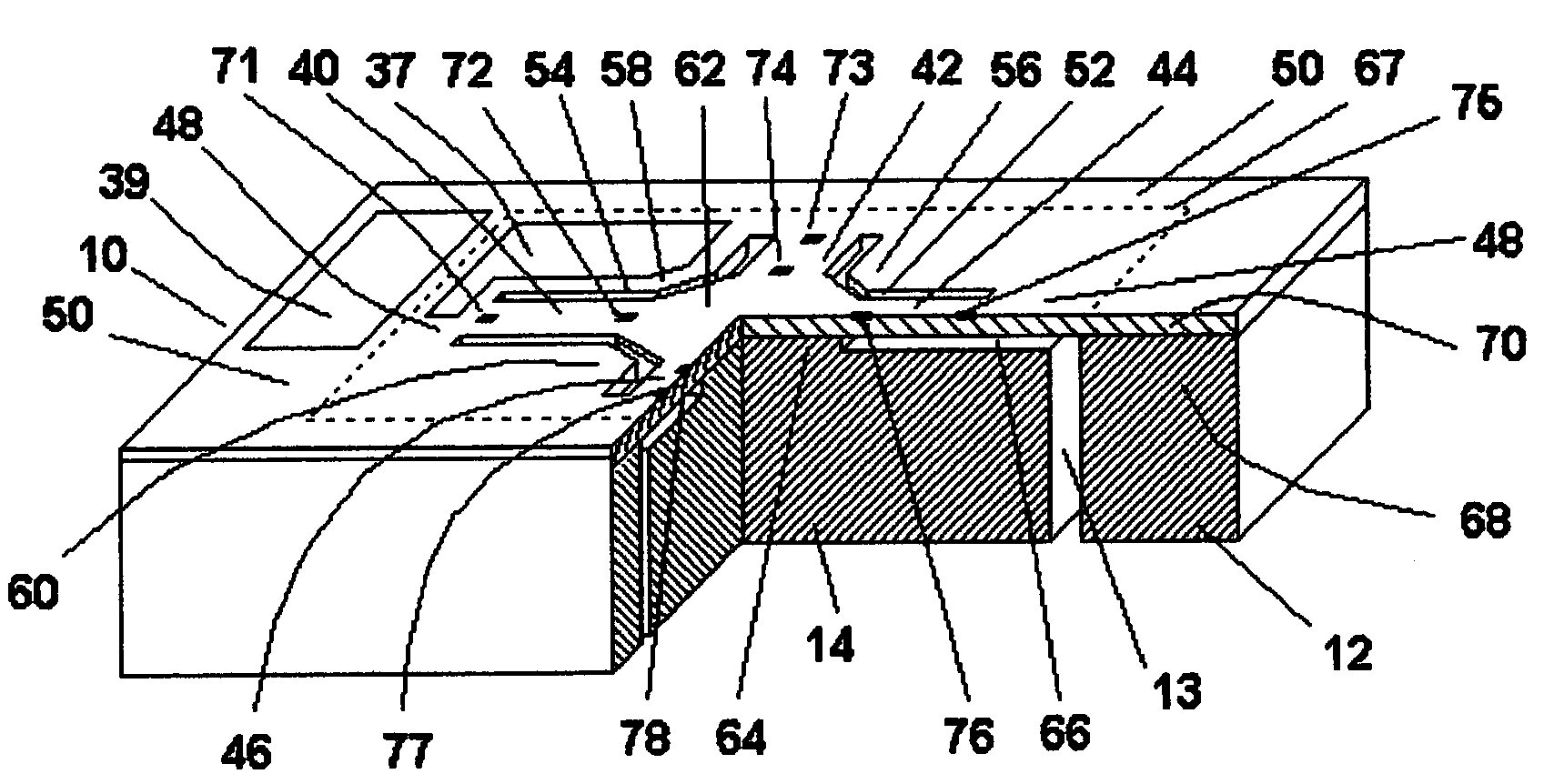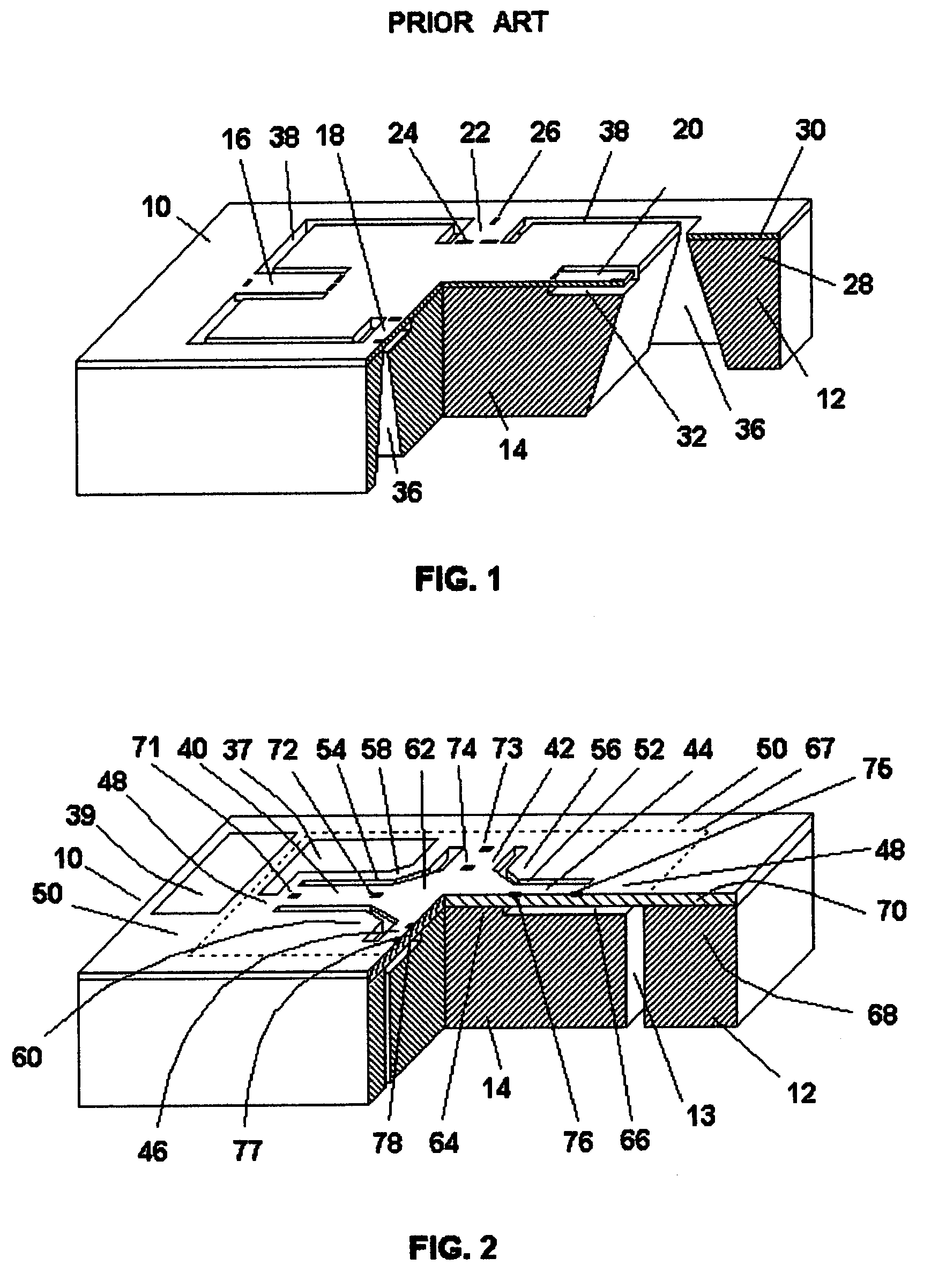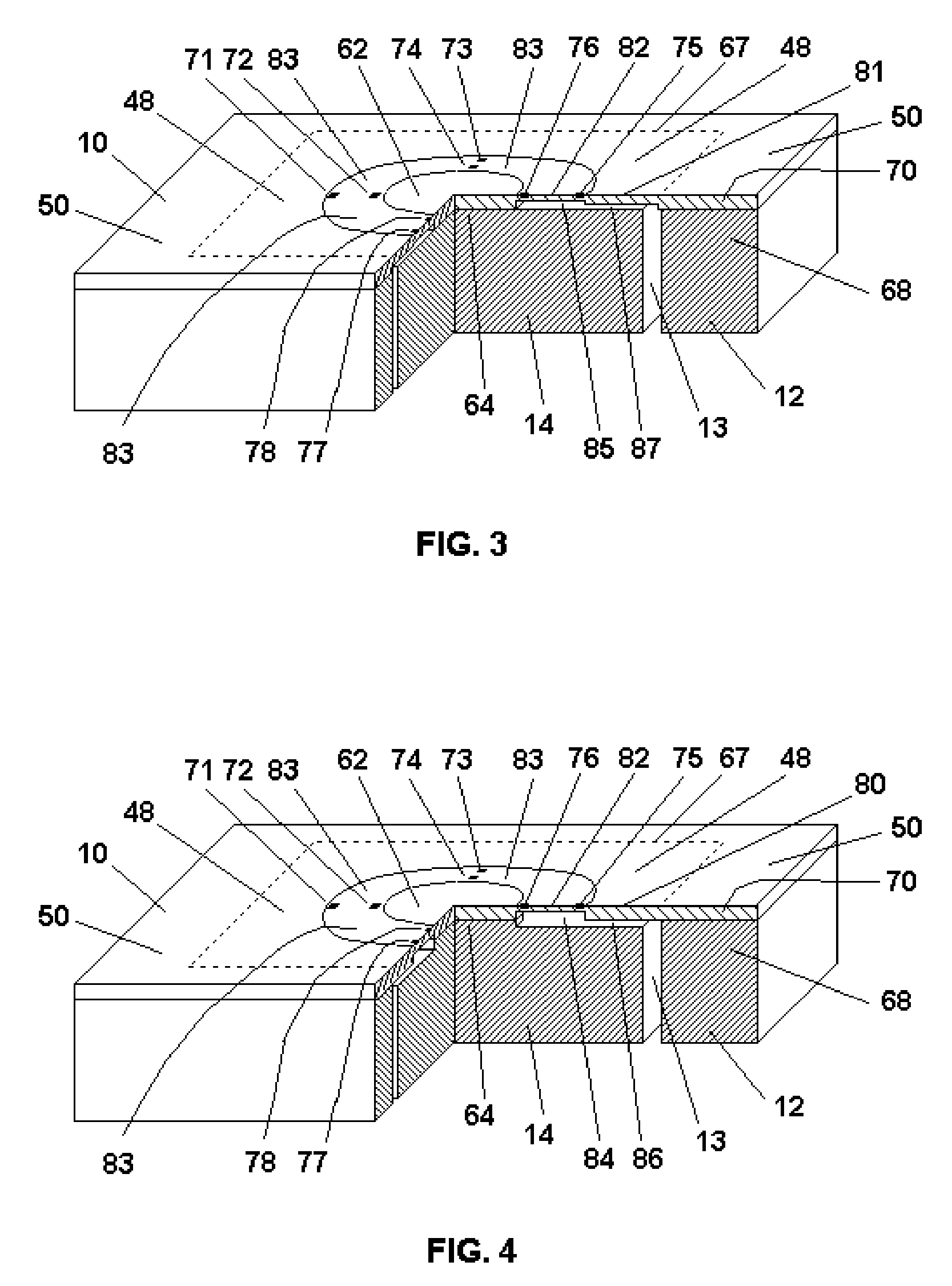Three-axis integrated MEMS accelerometer
a three-axis, accelerometer technology, applied in the direction of speed/acceleration/shock measurement, measurement devices, instruments, etc., can solve the problems of preventing market growth of three-axis accelerometers, impeded market growth of three-dimensional accelerometers, etc., to achieve low cross-axis sensitivity, high sensitivity to acceleration, and low power consumption
- Summary
- Abstract
- Description
- Claims
- Application Information
AI Technical Summary
Benefits of technology
Problems solved by technology
Method used
Image
Examples
second embodiment
[0126]FIG. 2 shows mechanical structure of threeaxis accelerometer for determining components of an inertial force vector with respect to an orthogonal coordinate system according to the The sensor die 10 has side 1 and an opposite side 2 in the plane of a semiconductor substrate. The coordinate system (X, Y, Z axes) is chosen such that X and Y axes are located in the plane of side 1 and parallel to the sidewalls of the chip. The Z-axis is perpendicular to side 1 and the origin is located in the projection of a center of gravity of the proof mass onto the side 1. Each of X, Y, Z dimensions of the proof mass is defined as maximum difference between corresponding coordinates of any two points of the proof mass. The sensor die 10 is fabricated on a semiconductor substrate of SOI type having handle layer 68 and device layer 70. A buried cavity 66, or in general a set of cavities, is formed in the handle layer 68 at the interface of the handle and device layers. Mechanical structure of ...
third embodiment
[0136]FIG. 3 and FIG. 4 show mechanical structures of three-axis accelerometer according to the
[0137]The sensor die 10 of three-axis accelerometer shown in FIG. 3 is fabricated on a semiconductor substrate of SOI type having handle layer 68 and device layer 70. A buried cavity 85, 87 are located in the device layer 70 at the interface of the handle and device layers. Mechanical structure of the three-axis accelerometer consists of a frame, a proof mass 14 and an elastic element In the form of an annular diaphragm 83. The frame has a thick portion 12 and a thin portion 48 having uniform thickness. The proof mass, being located within the thickness of SOI semiconductor substrate, is separated from the thick portion 12 of the frame by a slot 13, from the thin portion 48 of the frame by the buried cavity 87, and from the elastic element 82, 83 by the buried cavity 85. The annular diaphragm 83 is connected to the thin portion 48 of the frame on its outer edge and to the proof mass 14 at ...
fourth embodiment
[0144]FIG. 5 shows mechanical structure of three-axis accelerometer according to the The sensor die 10 is fabricated on a semiconductor substrate of SOI type having handle layer 68 and device layer 70. A buried cavity 86 is formed at the interface of the handle and device layers. Mechanical structure of the three-axis accelerometer consists of a frame, a proof mass 14 and an elastic element in the form of a portion 82 of diaphragm 80. The frame has a thick portion 12 and a thin portion 48 having uniform thickness. The proof mass 14 is separated from the thick portion 12 of the frame by a slot 13 and from the thin portion 48 of the frame by the buried cavity 86. Stress-sensitive components 72, 74, and 76 are located on the elastic element 82.
[0145]The improvement made to the three-axis accelerometer according to the fourth embodiment is related to simplification of the structure and as a result of that decrease of its cost.
[0146]As it can be seen from FIG. 5, the proof mass is suspe...
PUM
 Login to View More
Login to View More Abstract
Description
Claims
Application Information
 Login to View More
Login to View More - R&D
- Intellectual Property
- Life Sciences
- Materials
- Tech Scout
- Unparalleled Data Quality
- Higher Quality Content
- 60% Fewer Hallucinations
Browse by: Latest US Patents, China's latest patents, Technical Efficacy Thesaurus, Application Domain, Technology Topic, Popular Technical Reports.
© 2025 PatSnap. All rights reserved.Legal|Privacy policy|Modern Slavery Act Transparency Statement|Sitemap|About US| Contact US: help@patsnap.com



